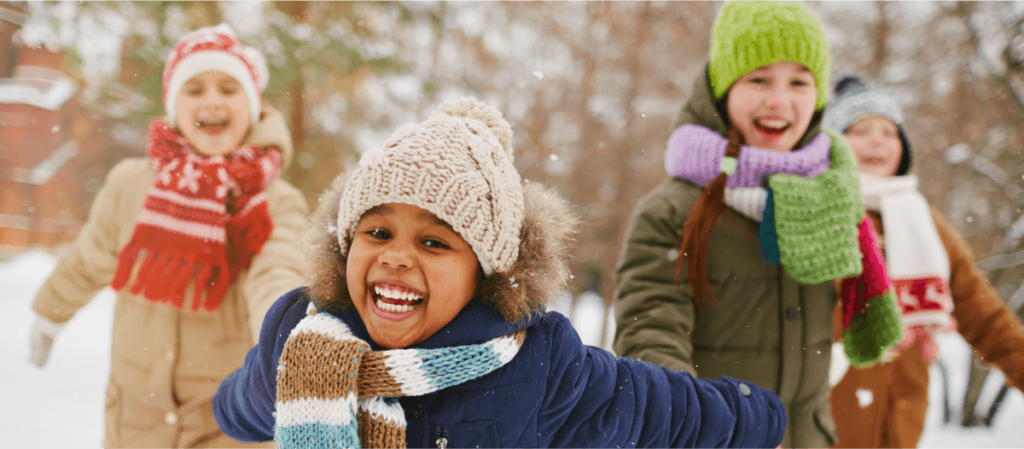
Q: The students in my classroom come from many different traditions and cultures. I know the winter holidays could be a great opportunity for students to learn about each other’s cultures, but I’m not sure where to begin. Do you have any suggestions?
A: I think asking this question shows that you’re already on your way; you’ve already recognized that every student comes from a unique family background. I would also pose a question in response: What opportunities are you giving your students to share? Morning Meeting is a wonderful opportunity, especially during the sharing component, to begin a discussion about tradition, starting with traditions that your school might have. Connect family traditions with school traditions and go from there.
One project I’ve done with students in the past is based on the book Flat Stanley, by Jeff Brown. We call ours Flat Student. Each student creates a flat version of themself and mails it to someone who doesn’t live nearby, along with a letter. The letter introduces Flat Student and explains that Flat Student is coming to visit them for the winter holidays and wants to learn all about how they’re celebrating.
We also send a template with two questions that recipients can respond to in a letter of their own:
After winter break, my students bring in the letters and photos they receive in response. A lot of times students send Flat Student to family members who get really into it, and so they will send back maps, postcards, and photos. We hang those up on a map so we can see where all the Flat Students visited. This display continues to grow throughout January as students receive responses and keep adding to it.
Flat Student was a great way to continue to share in family traditions while also learning about the traditions of others.
—Julie Kelly is a consulting teacher for Center for Responsive Schools and a contributing author for Empowering Educators for Grades 3-5.
A: One thing that I use in my early childhood classroom is the framework of windows versus mirrors. A mirror is something that I am reflected in; a window is something that I can look through and see an experience that is not my own. Whenever we’re learning about new people, customs, or traditions, these two lenses allow students to make connections on a whole variety of different levels, including when they see something new or different.
Mirrors can be something obvious, like a student recognizing, “This is a holiday that I celebrate.” They can be used for less obvious connections too. For example, when we held a Diwali celebration, some of the kids in the class who celebrate Hanukkah used the mirror lens to realize, “Oh, we use candles, too.”
Windows, meanwhile, create a framework for students to see something unfamiliar because they help scaffold students’ experience of the world outside of themselves. At this age, kids often respond to something new with “That’s weird” or “That’s different.” When I tell them, “You might hear something that’s different to you. We’re going to name it a window,” this gives them a framework to integrate the new information.
It’s also important to make sure that your classroom feels inclusive to every student who walks through the doors, so it’s worth it to be mindful about what displays are up. If we put up displays that show Christmas or Hanukkah, what are we saying about these holidays and the people who celebrate them? What are we saying about other holidays and those who celebrate them? What are we saying about people who don’t celebrate holidays? Rather than having holiday-specific displays, I use the festival of lights as an entry point into the conversation around holiday traditions. It’s more inclusive because many cultures have festivals of light, and from there students will make connections to candles or lights in the holidays they celebrate.
—Sara Kramer currently teaches a mixed-age pre-K/K classroom in New York City. Previously, she served as a music teacher for over ten years.
A: Sharing traditions in the classroom can be incredibly enriching and foster a sense of significance in students’ backgrounds and home lives, but there is also a risk that they can trigger grief due to loss or separation. For that reason, the first step is always to create a safe space where students can share, especially if they will be sharing information that is different from that of their classmates. A powerful way to create this space for students is to first have conversations about your classroom’s version of the rule or expectation around being respectful or kind. This can be in the form of posing the question “What does being respectful look, sound, and feel like when sharing about different traditions and cultures?”
Once these expectations are set, the sky’s the limit for what and how the students share. I’ve had a lot of success with students sharing food. Nothing makes a student more proud than bringing in a favorite family dish. If COVID restrictions prevent this, consider having students share pictures and recipes. They can also share cultural traditions by assembling photographs with written explanations. I’ve also found it inspiring to launch interview projects before the winter break. My favorite protocol for the actual sharing portion is for students to do a Museum Walk and leave sticky notes for questions and positive comments.
However you choose to share, be sure to celebrate differences AND build togetherness through shared classroom traditions. If your school is lacking shared rituals and celebrations, create some new ones. It will leave your community stronger and strengthen the sense of belonging for your students during this special time of year.
David Rodich is an upper elementary teacher in Vermont with over a decade of experience in the field of education.